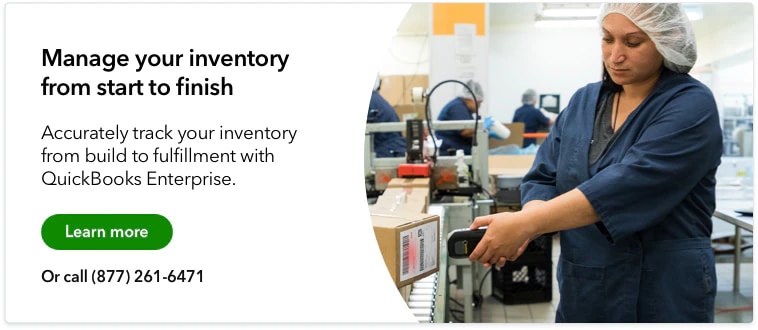Across all the activities that take place along a company’s supply chain, order picking is one of the costliest and most labor intensive steps.
Order picking refers to the act of retrieving items in a warehouse for a customer order, and is estimated to be anywhere from 50–75% of total operating costs. As the first step in the fulfillment process, warehouse order picking also has a significant impact on all other parts of the company.
By optimizing its order picking process, a company can reduce errors in shipment, eliminate unnecessary costs, and increase overall customer satisfaction.
What is order picking?
Order picking (also referred to as warehouse order picking) is the process of finding and retrieving items from inventory to complete a customer’s order.
It’s the start of the order fulfillment process and directly affects all succeeding steps, from packing to shipping and final delivery.
An order picker goes around the warehouse, finding and pulling all the items needed to fulfill an order. While inherently labor-intensive, order picking should be carried out as efficiently as possible to complete a customer’s order in the allotted time.
Benefits of efficient order picking
Order picking sets the pace for the entire fulfillment process. For a company to successfully meet market demand and achieve customer satisfaction, it’s important to have an established order picking system in place. Here are the main benefits of efficient picking:
Gets orders to customers faster
Efficient order picking allows more orders to be filled faster, which get orders to your customers’ doors faster. Speed is the name of the game in shipping and fulfillment, so giving your warehouse team everything they need to pick orders quickly is a wise investment.
Reduces errors in customer orders
The repetitive, labor-intensive nature of order picking makes it prone to errors. By combining the manual process with order management automation, warehouse pickers are able to access updated inventory records, sort orders by scheduled delivery, and verify whether a picked item is correct.
Optimizes warehouse operations
Most companies will have multiple orders being processed at the same time. An efficient order picking system can help combine similar items and highlight the best routes through which to retrieve them. By working toward more streamlined warehouse operations, a company can speed up order fulfillment and scale its business.
Improves employee motivation
Order management software can make a warehouse employee’s day much easier. QuickBooks Enteprise offers access to a dashboard that has real-time customer order and inventory information, so order pickers can accomplish their tasks in a shorter amount of time.
Eliminating any unnecessary steps and stress can improve an employee’s job satisfaction and motivate them to deliver their best work.
4 proven order picking strategies
The right order picking strategy depends on a company’s range of products, how much inventory it holds in stock, the size of its fulfillment team, and total warehouse area.
Based on these factors, there are four main strategies to consider when planning order picking operations:
Single order picking
Single order or discrete order picking is the simplest and most popular method, where an individual picker works to fulfill one order at a time. A designated picker is responsible for completing the entire order, regardless of how many items are included.
Because this can take a lot of time and travel across a location, discrete picking is best for small warehouse operations.
Batch order picking
Batch order picking (also called multi-order or cluster picking) allows pickers to fulfill multiple similar orders at the same time. In this strategy, orders with the same items or SKUs are collected together as a way to consolidate the number of trips to a single area.
Batch picking is preferred by companies that receive several orders of the same item, as it helps eliminate any repeat effort and travel time.
Zone order picking
Zone order picking divides a warehouse into different zones, and assigns one or more pickers to retrieve items located within these designated zones.
This setup is ideal for organizing larger warehouses that see a high volume of orders. Each picker develops a deeper familiarity with the inventory in their specific zone and contributes to a more efficient fulfillment process.
Zone picking is often used in combination with the pick-and-pass method, which works by pulling SKUs from each picking zone and then passing the collected items from one zone to another until the orders are complete.
Wave order picking
Wave order picking assigns all items into batches or “waves” based on their type, shipment date, warehouse location, and other information. This strategy places priority on the most optimal schedule, aligning the company’s available resources with the customer order volume.
By only working on the orders that are most important at the moment, and scheduling the remaining tasks as needed, wave picking makes the most of order consolidation to maximize fulfillment output.
Order picking best practices
Order picking is one of the most frequent activities that take place in a warehouse. For a company to fulfill deliveries on time and meet customer demand, it should have clear order management and warehouse processes.
Below are four proven order picking best practices all companies should implement:
Use the right order picking strategy
The previous section outlined the most popular types of order picking strategies. The best one to use, however, depends on available resources, specific inventory types, and the average customer order.
A company can also combine multiple strategies to fit its current warehouse operations. Choosing the right order picking strategy can improve order fulfillment, as well as all other functions in supply chain management.
Create an optimal warehouse design
The success of any order picking strategy relies on having effective warehouse design and layout. At the most basic, a warehouse should have clear pick locations and routes, the right order picking equipment (i.e., forklifts, pallets, packaging cartons), and enough space for other activities, such as consolidating and receiving items.
Once companies have better projections of their best-selling inventory for each season, they can reorganize the warehouse systems and move SKUs to more convenient locations in order to improve travel time.
Apply an effective warehouse management system (WMS)
Even smaller operations have to manage a growing amount of customer and inventory information. A dedicated warehouse or order management software can organize the entire process, from automating inventory management to updating the real-time status of each delivery.
By consolidating order information into a single dashboard, a company can view every step in its supply chain and make the necessary changes to increase picking accuracy and improve its fulfillment process.
Automate order and data tracking
As the market demand, inventory selection, and customer orders change, it’s important for companies to keep tabs on all the moving parts.
Order management software comes with picking technology that automatically tracks and collects data – from ideal inventory replenishment levels to a customer’s order status – that can be used to analyze warehouse performance and determine any areas of improvement.
How QuickBooks helps you optimize order picking
Rather than working across several tools, Quickbooks Enterprise provides a comprehensive order management software that brings all the important data onto one platform. Everyone in a company can access up-to-date information for any order, helping eliminate any confusion and potential mistakes in the order fulfillment process.
Managers in any location can send detailed pick list instructions straight to their order pickers on the warehouse floor, who can then pack and print shipping barcodes and labels directly from the platform.
No matter what order picking strategy a company uses, QuickBook Enterprise's end-to-end functionality enables you to fulfill orders faster and easily manage the entire process from start to finish.
Final thoughts
An efficient order fulfillment process starts with order picking. The best order picking method is based on several factors: the company’s warehouse size, number of order pickers, and the complexity of items included in an average customer order.
Regardless of what order picking strategy is used, it’s always recommended to streamline the workflow with order management software. An automated system aligns a company’s entire warehouse operation, enables teams to communicate from any location, and builds the most optimal order fulfillment process.














